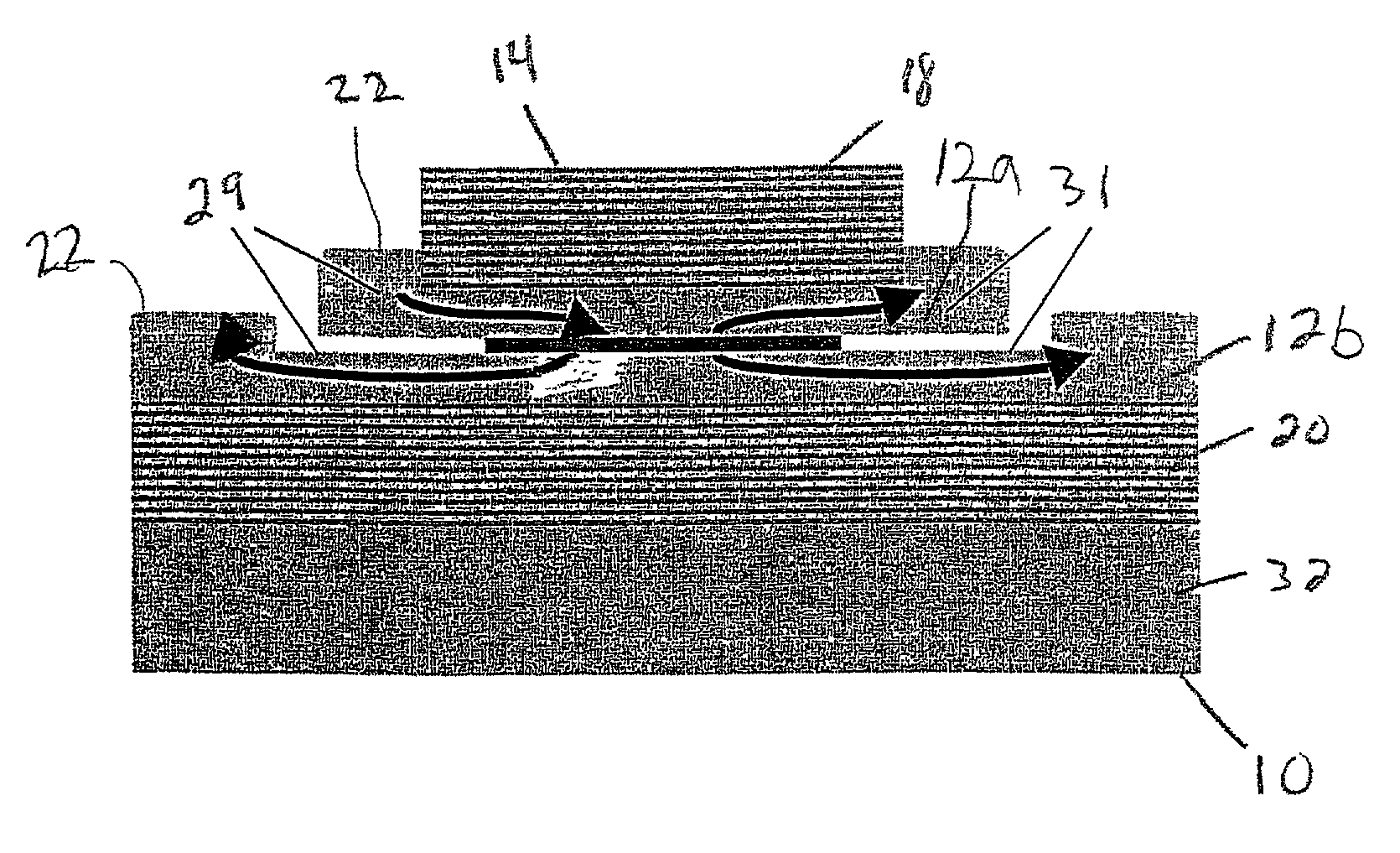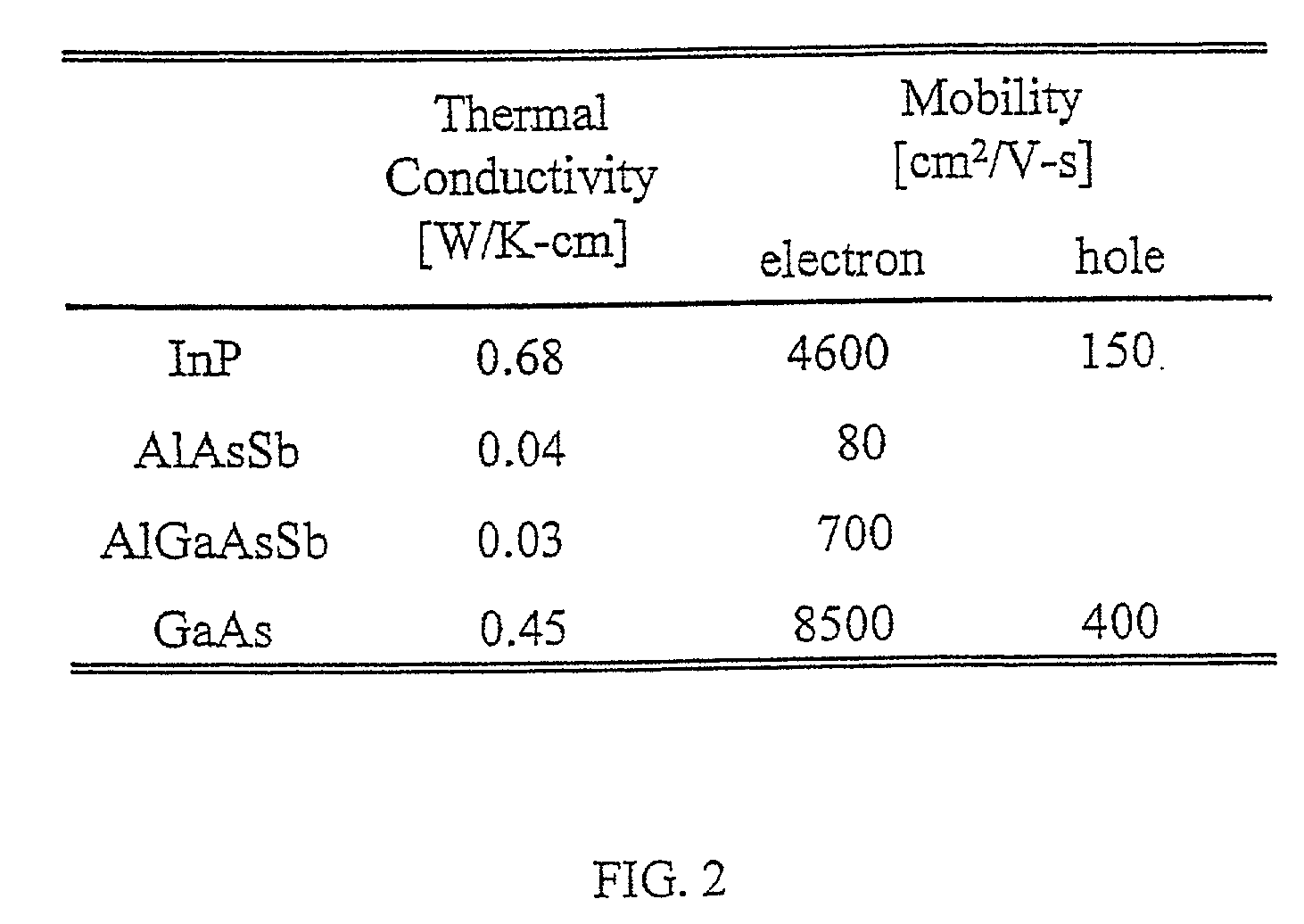Double intracavity contacted long-wavelength VCSELs and method of fabricating same
a technology of vcsel and contact lens, which is applied in the direction of laser details, nanooptics, semiconductor lasers, etc., can solve the problems of poor electrical and thermal conductivity, certain limitations and drawbacks, and vcsel performan
- Summary
- Abstract
- Description
- Claims
- Application Information
AI Technical Summary
Benefits of technology
Problems solved by technology
Method used
Image
Examples
Embodiment Construction
[0045] FIG. 1 is a schematic representation of a long wavelength VCSEL 10 having two InP layers 12a, 12b cladding an InAlGaAs-based active region 14, such that the active region 14 is disposed between the two InP layers 12a, 12b to form a double intracavity contacted structure. A tunnel junction 16 located between one of the InP layers 12a and the active region 14 generates holes for quantum wells in the active region 14 and allows both of the InP cladding layers 12a, 12b to be n-type. Only the InP cladding layers 12a, 12b, the tunnel junction 16 and part of the active region 14 are doped. Holes are created by the extraction of electrons from the valence band of a p-type layer in the tunnel junction 16. This design allows for the two n-type cladding layers 14 which have both higher electrical conductivity and lower optical loss than similarly-doped p-type layers. The tunnel junction 16 itself is at a standing-wave null of the cavity mode to minimize the absorption associated with the h
PUM
 Login to view more
Login to view more Abstract
Description
Claims
Application Information
 Login to view more
Login to view more - R&D Engineer
- R&D Manager
- IP Professional
- Industry Leading Data Capabilities
- Powerful AI technology
- Patent DNA Extraction
Browse by: Latest US Patents, China's latest patents, Technical Efficacy Thesaurus, Application Domain, Technology Topic.
© 2024 PatSnap. All rights reserved.Legal|Privacy policy|Modern Slavery Act Transparency Statement|Sitemap



